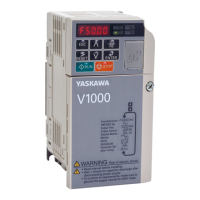2. 8.25.2 Stock Removal in Turning (G 71) (Cent’d)
(3) Rules in programming G71
a. Addresses U , W, I and K must be program-
med with signs.
If a wrong sign is pro-
grammed, the workpiece may be gouged.
An address D for depth of cut must be pro-
grammed without signs .
b. Finishing shape program must be program-
med immediately after the block containing
G71. Even a block between them is ignored.
c. When F and S codes are not specified in the
block containing G 71, F and S codes spec-
ified in the preceding block are effective
for G71 mode.
F and S codes specified in the program of
finishing shape become effective only for
G 70 mode and are disregarded in G71 mode.
d. The following should be taken into consider-
ation in programming the start block ( Nns )
and the end block (Nnf) of a finishing shape
program.
Usable G code
I
Remarks
Gill
A blcck
containing these codes
must be counted as four blccks.
—
G112
A blcxk containing these codes
must be counted as five blwks.
e.
When a program has entered the tool nose
radius compensation
mode before the G 71
is commanded, the compensation is effec–
tive for the G71 cycle.
f.
The above rules and cautions in program-
ming G71 also apply to G72 cycle.
In other
words,
the G72 cycle is the same as G71
except that cutting is made in parallelwith
X-axis.
g.
Cut depth override of G71 and G72
Ten percent step override may be applied,
within the range of O to 200%, to the depth
of cut D of each time in the following two
manners:
(i) By setting #6004D3 through D7.
(Set with 5-bit code. )
(ii) By G71/G72 cut depth override switch-
ing.
Either of the above methods
shown in (i) or (ii) may be selected
by parameter #6023D2.
Parameter
Function
However, the compensation is executed not
in the stock removal cycle but in the rough
finishing cycle.
Thus, the compensation is ineffective for
the program in which the rough finishing
cycle is omitted. (I = O, K = O)

